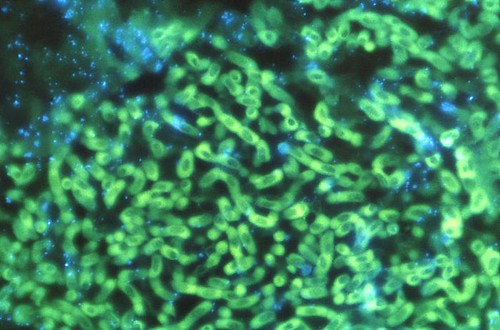Pearl Diagnostics develops tests to diagnose the critical fungal infections the WHO highlighted on Tuesday. As we work with partners including GAFFI-The Global Action Fund for Fungal Infections and scientific collaborators around the world, we are advancing the availability of tools clinicians need to identify and treat these important infections.
Original article is available at this link, posted October 25, 2022 at the Wall Street Journal.
The World Health Organization created a list of fungi that it said pose a growing risk to human health, including yeasts and molds found in abundance in nature and the body.
The WHO said Tuesday that the 19 species on the list merit urgent attention from public-health officials and drug developers. Four species were designated as threats of the highest priority: Aspergillus fumigatus, a mold found abundantly in nature; Candida albicans, which is commonly found in the human body; Candida auris, a highly deadly yeast; and Cryptococcus neoformans, a fungus that can cause deadly brain infections.
“Fungal infections are growing, and are ever more resistant to treatments, becoming a public-health concern worldwide” said Hanan Balkhy, the WHO’s assistant director-general.
Fungal infections are estimated to kill at least 1.6 million people yearly, according to Global Action for Fungal Infections, a research and fundraising organization. In the U.S., more than 75,000 people are hospitalized with fungal infections every year, the Centers for Disease Control and Prevention said.
The WHO said the full impact of fungal infections globally is unknown because of a lack of data. The agency urged countries to strengthen surveillance of fungal pathogens and expand laboratory capacity to screen for fungal diseases.
Healthy people remain unlikely to contract a severe fungal infection, public-health experts said. But rates of serious fungal infections are expected to grow as fungi adapt to warming temperatures in ways that may make them more effective at infecting humans, the WHO said. The number of immunocompromised people and people with chronic diseases such as diabetes is also increasing, the agency said. Immunocompromised people, including those with diseases such as HIV/AIDS and patients undergoing treatments such as chemotherapy and organ transplantation, and people with chronic conditions are at highest risk of severe fungal disease.
Threats to the general population are also growing, the WHO said, as some common fungal pathogens become more resistant to existing treatments, escalating the chances that more invasive forms of the pathogens could develop.
Aspergillus fumigatus, which most people inhale every day, can cause disease of the lungs but can also colonize other parts of the body including the brain, infectious-disease experts said. Hospitalizations related to severe Aspergillus infections have been rising in the U.S. since at least 2004, a 2019 study in the journal BMC Public Health showed.
Candida albicans causes oral thrush and vaginal yeast infections, and can also infect the blood, heart and other internal organs.
“The general public doesn’t appreciate how serious fungal infections can be,” said Felipe Santiago-Tirado, a fungal-infection expert at the University of Notre Dame. “Mortality can be very high.”
The mortality rate of Candida auris, which often spreads in hospitals, can be as high as 60%, the CDC said. The first known Candida auris infection was identified in a person in Japan in 2009. Reported Candida auris cases in the U.S. rose to 700 in 2020 from 10 in 2015, the CDC said.
Globally, Cryptococcus neoformans is a major cause of illness in patients with HIV/AIDS and kills at least 180,000 people annually, the agency said.
There are four classes of antifungal medicines for invasive fungal disease, and most drugs in these classes are toxic, even at low doses, infectious-disease experts say. A new class to treat severe diseases hasn’t been approved in over 20 years. Fungal infections receive less than 1.5% of all infectious-disease research funding, the WHO said.
Several antifungal drugs in development, including Scynexis Inc.’s ibrexafungerp and Pfizer Inc.’s fosmanogepix, have been shown in clinical trials to be effective against Aspergillus and Candida infections. Cidara Therapeutics Inc. has submitted its drug rezafungin for Food and Drug Administration approval to treat Candida infections, including severe disease; and F2G Ltd. said its antifungal olorofim had been found effective at eradicating Aspergillus and other rare molds in a Phase 2 clinical trial.







